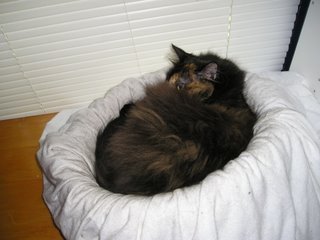Hamhanded ChiracNothing like a dark, lizardlike zoo of a museum to celebrate "primitive"--um, indigenous art:
The French president, Jacques Chirac, unveiled his great cultural legacy to the country yesterday, a new museum for indigenous art which he promised would inspire "peace and tolerance" in the world.But even as Mr Chirac announced in the presence of the UN secretary general, Kofi Annan, that he was giving a voice to "peoples humiliated and scorned", questions lingered over whether the museum was rehashing colonial cliches, why exhibits appeared to be scantily labelled and whether the €230m (£160m) project, which has already overrun and overspent, would be finished before opening to the public on Friday.
The Musée du Quai Branly - the biggest museum to be built in Paris since the Pompidou centre in 1977 - is Mr Chirac's attempt to cast himself as the defender of art from Africa, Asia, Oceania and the Americas. A long-time fan of indigenous artefacts, he also wanted to leave Paris with an architectural imprint to rival François Mitterand's legacies, such as the glass pyramid at the Louvre. Asked this week whether the museum would one day become known as "Musée Chirac", the 73-year-old president said he would be honoured if it did.
Controversy has surrounded the 11-year project from the start. It was initially to be called a museum of "primitive" or "primary" arts but was instead named after its location as the term was considered demeaning.
The historian Gilles Manceron said this week that the museum, designed around a jungle theme, still risked perpetuating colonial stereotypes and that non-European art should be shown alongside European works and not ghettoised.
Jean Nouvel, the celebrated Paris architect who designed the interlinking buildings on the banks of the Seine, described his museum on stilts as "a snake or a lizard into which you walk and discover not so much a building as a territory - a zoo really".
Le Monde hailed the "spectacular" displays but some found the museum too dark, cluttered and lacking in explanation of objects. Others complained of headaches and eye-strain from the darkened rooms.










